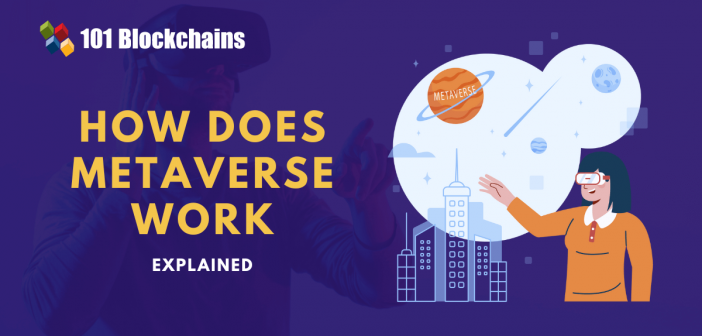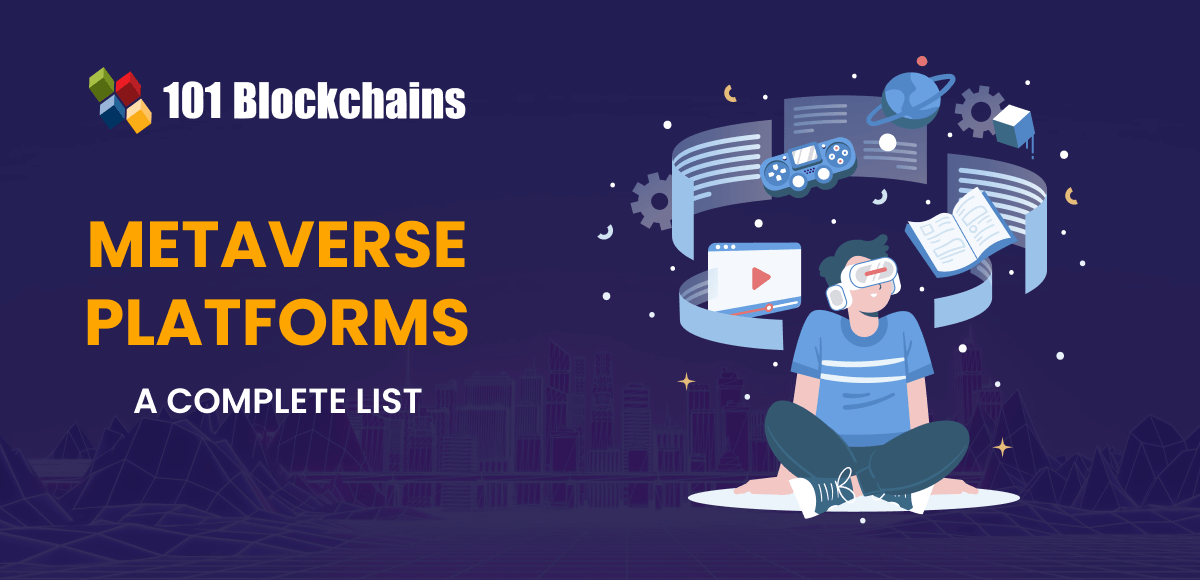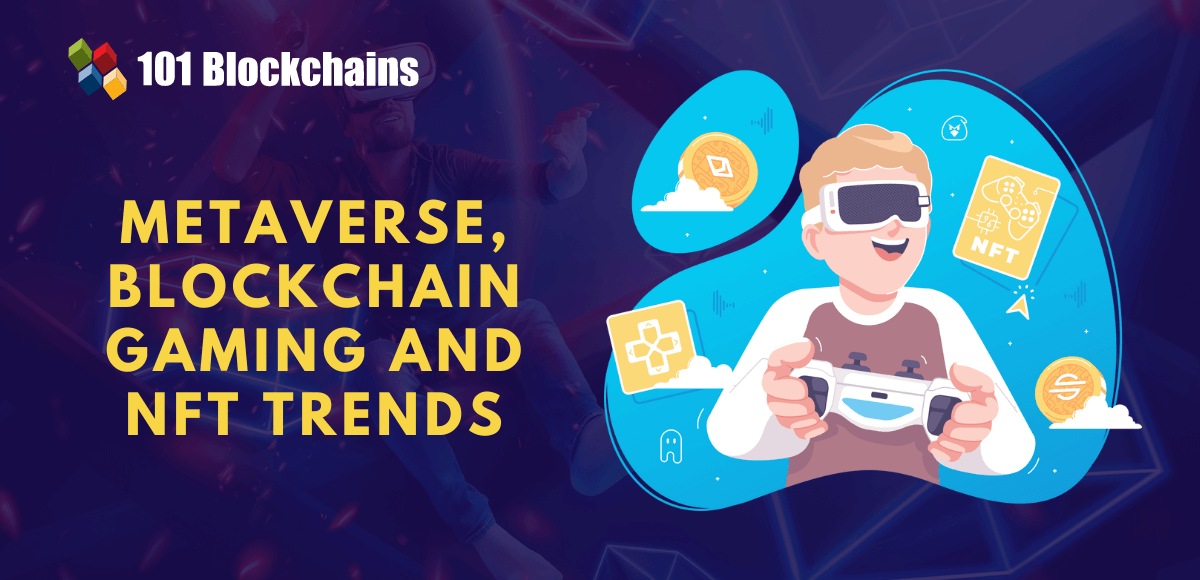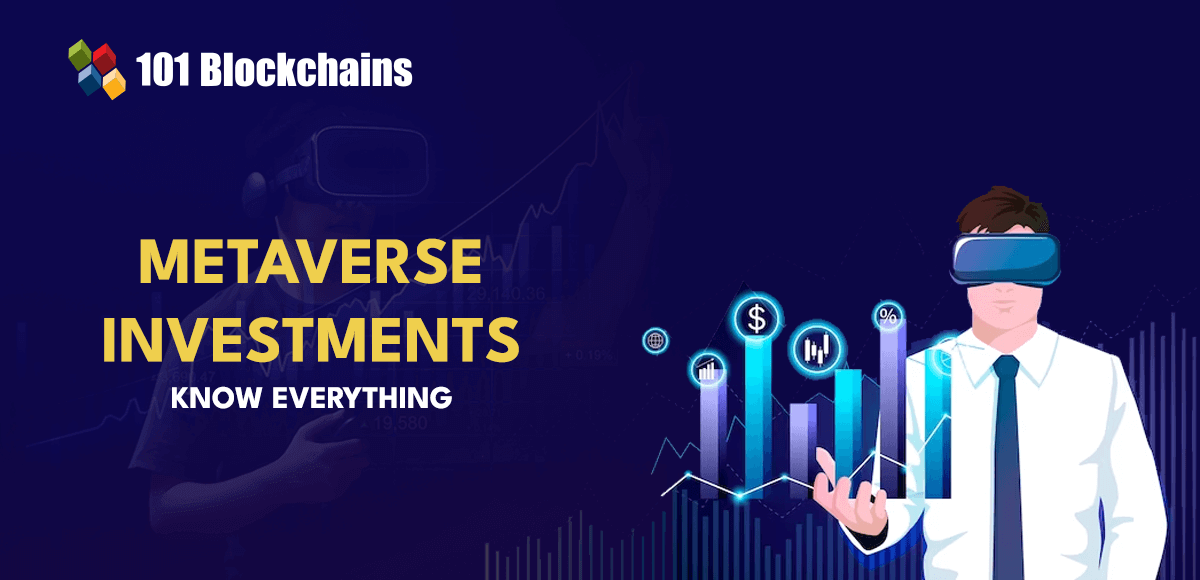Learn how blockchain truly works, master key definitions, and uncover what makes smart contracts so "smart." Dive into the fundamentals, gain valuable insights, and start your blockchain journey today!

Metaverse
Georgia Weston
on September 23, 2022
How Does the Metaverse Work?
Facebook, Microsoft, Google and many other big names in the world of tech have been talking about the metaverse a lot in recent times. The curiosity regarding how metaverse works and how it can revolutionize the future has been building up gradually. However, the metaverse is a completely new concept, and many people have been struggling to find the actual meaning of the term.
On the one hand, you have the descriptions of metaverse as a shared virtual world, while on the other, you can notice big companies coming up with their own metaverse platforms. How will the metaverse shape up in the future? You can find the answer only through an in-depth understanding of the working of metaverse. The following discussion helps you learn about the working of metaverse with insights into the technologies defining the metaverse.
Defining the Metaverse

The term ‘metaverse’ has been one of the trending topics in recent times. Facebook announced that it would take up a new name for its parent company and introduced Meta to the world. In addition, a virtual real estate company, Metaverse Group, purchased a virtual parcel of land on Decentraland metaverse for around $2.43 million.
NFT-based metaverse platforms and virtual workspaces based on virtual and augmented reality technologies are setting new milestones for growth in the metaverse. However, the answers to “what is the metaverse” can end up confusing you in many ways. You must know that the metaverse has been described with multiple definitions depending on how people perceive the technology. On top of it, the world does not have a completely developed metaverse right now.
Many people assume that the metaverse work like an improvement over the internet, bringing it into the three-dimensional arena. The metaverse is an open, shared and persistent virtual world with multiple digital spaces that allow users to avail various services and experiences. Users can enter the metaverse in the form of digital avatars complemented with VR/AR technologies to ensure a sense of presence in the metaverse.
Users could interact with each other alongside the assurance of continuity in data pertaining to identity, communications, transactions and asset ownership. Contrary to popular assumptions, the metaverse would not replace the internet. As a matter of fact, the metaverse would build up on the internet and gradually introduce transformations in web experiences. Nobody had thought of the metaverse until a year ago, and now it is one of the hottest topics in tech. Where did the metaverse come from?
Want to get an in-depth understanding of metaverse concepts? Join the Standard & Premium Plans and get free access to Metaverse Fundamentals Course Now!
Origins of the Metaverse
Considering the fact that the metaverse has not been developed yet, you are less likely to find clarity about how does metaverse work and more about its impact. The origins of the concept behind ‘metaverse’ could help you find a better impression of how it can deliver value. To everyone’s surprise, the metaverse is not a new term, even though it has become popular only recently.
The first ever noted instance of the term ‘metaverse’ has been traced back to a 1992 science-fiction novel, Snow Crash. Interestingly, the novel presents an almost realistic depiction of how the metaverse would look like. Author Neal Stephenson pained the metaverse as a futuristic and ultimate version of the internet, a virtual space where the actions of users also affect their physical lives.
You can find a brief reference to the working of metaverse explained in Snow Crash by Neal Stephenson. The book presents metaverse as a persistent virtual world featuring digital social interactions or virtual avatars and games. Over the course of history, many other books, television shows and films have showcased crude representations of the metaverse.
For example, the Steven Spielberg movie, Ready Player One, showed how people in the real world could escape into virtual reality to escape the horrors of a dystopian world. In every account of the metaverse and its origins, you would find a common thread associating the metaverse with virtual reality. It can serve as a formidable instrument for helping people to explore new experiences and use cases with the internet.
Excited to develop an in-depth understanding of the concept behind the metaverse technology? Enroll Now in Metaverse Technology Course – Intermediate Level
Popular Examples of Metaverse
The basic explanation for ‘what is the metaverse’ and its origins offer a brief impression of what it actually aims to achieve. However, it is also important to note that a singular metaverse encompassing all virtual experiences in the world is yet to arrive. Interestingly, multiple companies have come up with distinct metaverse platforms featuring unique experiences. Some of the popular examples in the world of metaverse include Decentraland, Sandbox, Roblox and many other online games. The platforms help users access virtual spaces with the help of custom digital avatars.
The avatars can serve as a conduit for users to interact with other users in the metaverse. One of the important highlights in ‘how metaverse works’ would show how users would have the ability to create assets and experiences in the metaverse. On top of it, virtual currencies and tokens could help in proving ownership and transactions in the metaverse.
Decentraland and Sandbox have been emphasizing virtual real estate for customizing and offering new experiences and virtual spaces to users. For example, brands could find use cases for marketing in the Decentraland and Sandbox metaverse platforms. Roblox is also one of the top examples of platforms that can showcase the use of games in the metaverse. Furthermore, Microsoft’s acquisition of Activision Blizzard, a game development company, creates new prospects for the rise of metaverse.
Learn about the fundamentals, key elements and business opportunities of the metaverse technology through this Metaverse E-book: An Introduction To Metaverse
Explanation for Working of Metaverse
The examples of metaverse work towards setting a foundation-level impression of how the metaverse functions. Till now, you know that the metaverse is a large, open and persistent virtual space shared by all users. The metaverse maintains continuity of data alongside ensuring that users can create and monetize assets and experiences within the metaverse.
However, you need a deeper understanding of how metaverse works by exploring the different layers of the metaverse. The seven layers of the metaverse architecture provide a formidable understanding of how the metaverse functions. Here is an overview of the significance of each layer in the architecture of metaverse.
-
Experiences
The first element in the metaverse visible to users would be the experiences. In this case, you can refer to experiences in the form of 3D visuals or two-dimensional experiences. In simple words, the experiences in the metaverse are any activity you can participate in, such as shopping, gaming, social interactions or online gaming.
-
Discovery
Discovery is another crucial element for top metaverse companies as it helps in enriching the experiences of users. For example, inbound discovery systems in the metaverse ecosystem, such as search engines, could help in finding new services and experiences. On the other hand, the discovery layer of the metaverse features the benefits of social curation alongside ratings and stores in the metaverse.
-
Creator Economy
The metaverse has revolutionized the role of creators or developers in the digital era. In the early days of the web, developers required expertise in coding to make a great application. With the metaverse, you can leverage low-code tools for creating applications. The creator economy in the metaverse can offer seamless access to design tools and marketplaces. In addition, the creator economy fuels commerce and workflows for creation of new assets and experiences in the metaverse. As a result, users are more likely to exercise complete control over ownership and management of their assets.
-
Spatial Computing
The next crucial metaverse component for understanding ‘how the metaverse work’ would refer to spatial computing. Virtual reality, augmented reality, 3D engines, geospatial mapping, and multitasking UIs are some of the prominent highlights of spatial computing components for the metaverse. The combination of these technologies can ensure that users feel the immersive experiences within the metaverse.
Start learning the fundamentals of the metaverse with World’s first Metaverse Skill Path with quality resources tailored by industry experts Now!
-
Decentralization
The importance of decentralization for the metaverse can never go unnoticed, especially for the independent experiences of all users. How does the metaverse ensure that every user can have a unique digital experience within the metaverse? Blockchain technology serves as the answer to decentralization needs in the metaverse and helps users exercise ownership of their data and assets.
-
Human Interface
The human interface component is also another critical aspect in the architecture of metaverse. It is essential for helping users access the metaverse, thereby serving as gateways into the metaverse. Human interface in the metaverse work to deliver immersive experiences in the metaverse. For example, haptic devices, wearables, smart glasses, mobile phones, gestures and neural routes could help you enter the metaverse easily without any complicated setup.
-
Connectivity
The final and most important highlight in the working of metaverse explained clearly would focus on connectivity technologies. How are you supposed to access the metaverse without connectivity and the required infrastructure for running the metaverse? Think of connectivity technologies such as 5G, cloud computing, Wi-Fi, GPUs and many other computing resources. All of these components are essential for connecting users to the metaverse with assurance of fluid and seamless experiences in the virtual worlds.
Build your identity as a certified blockchain expert with 101 Blockchains’ Blockchain Certifications designed to provide enhanced career prospects.
Important Technologies behind the Metaverse
The discussion on working of the metaverse would remain incomplete without referring to the technologies which make up the metaverse. As a matter of fact, the technologies such as AI, IoT and others define a specific structure for developing the metaverse. Here is an overview of the technologies which make up the fundamental design of the metaverse.
-
Artificial Intelligence
Artificial intelligence or AI is an important component for understanding how metaverse works and how it could improve in the future. The combination of AI and metaverse technology could ensure stability of the metaverse infrastructure while also facilitating actionable information to user-facing layers. The NVidia Omniverse is one of the top examples which showcase the productive implementation of AI for developing digital spaces within the metaverse to facilitate social interactions.
-
Internet of Things
Internet of Things could serve as a significant booster for the metaverse, and top metaverse companies should capitalize on the opportunity. The IoT ecosystem could play a vital role in bridging the gaps between metaverse and the physical world. You can think of IoT as a three-dimensional user interface suited for IoT devices with a personalized IoT experience. The combination of metaverse and IoT could help organizations in reaching important decisions based on data with minimal effort.
-
3D Modeling
3D modeling basically refers to the use of computer graphics for developing a three-dimensional representation of any object or surface. You cannot ignore how 3D modeling is an important technology for metaverse as it supports one of the basic propositions of the metaverse. As a matter of fact, the metaverse can be developed by converting images and graphic designs into 3D representations. On top of it, the effectiveness of 3D modeling can also provide assurance for immersive experiences on metaverse platforms.
-
Spatial and Edge Computing
The final and most disruptive change in the metaverse would evolve in the form of spatial computing. It means that users don’t have to follow a specific template for accessing the services or experiences they want. For example, you don’t have to rely on VR headsets every time you want to access the metaverse.
Spatial computing basically refers to the use of physical space in the form of a computer interface. The advancements in AR have answered ‘how does metaverse work’ with references to spatial computing. In addition, edge computing can help users in accessing computation, storage and many other solutions without any concerns of interoperability.
Want to understand the fundamentals of the Internet of Things (IoT)? Join the Standard & Premium Plans and Enroll Now in IoT Fundamentals Course!
Final Words
The different layers of the metaverse and the underlying technologies show a credible impression of how it works. The metaverse is a disruptive and futuristic concept. It can change the way people see and use the internet and other digital services. The metaverse features distinct traits such as decentralization, spatial computing and immersive experiences.
These traits show that the metaverse aims to place control back in the hands of users. Many of the top metaverse companies continue racing ahead with their individual metaverse projects. Therefore, the interest in learning about how it works has been growing. Discover more information about the metaverse, metaverse use cases and benefits with proven learning resources.
*Disclaimer: The article should not be taken as, and is not intended to provide any investment advice. Claims made in this article do not constitute investment advice and should not be taken as such. 101 Blockchains shall not be responsible for any loss sustained by any person who relies on this article. Do your own research!






